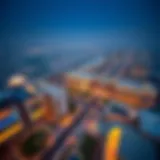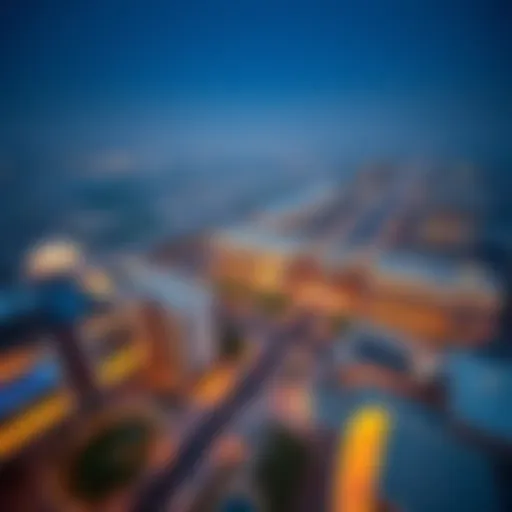The Al Kifaf Oasis Building: Architectural Insights
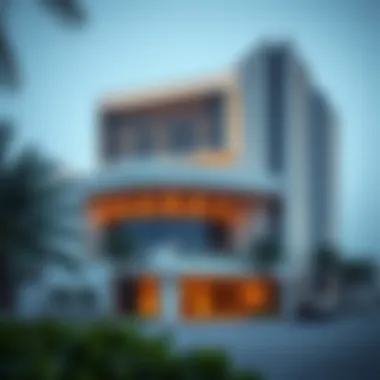
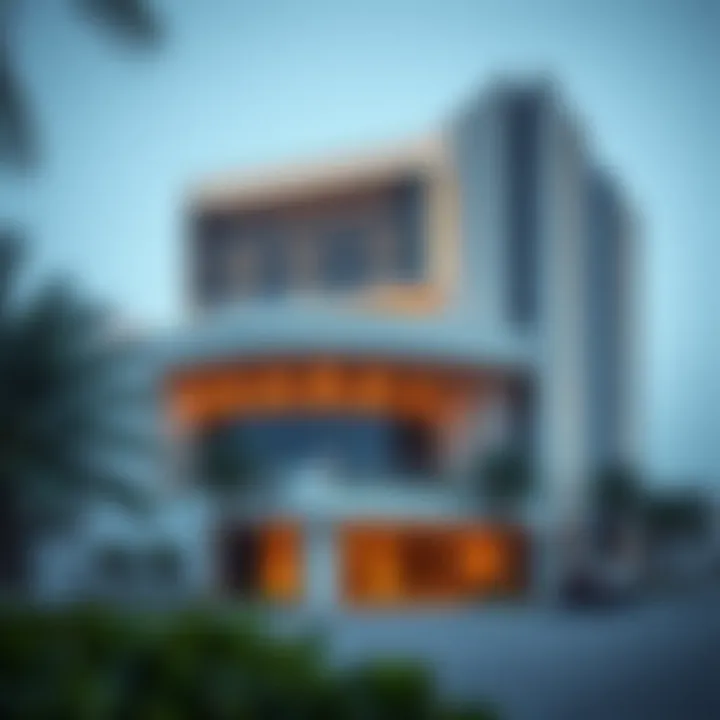
Intro
The Al Kifaf Oasis Building is not just another structure in the bustling landscape of Dubai; it is a manifestation of the city's journey through time, blending the old with the new in a way that captures the essence of its heritage. In an ever-evolving city known for pushing the envelopes of architectural possibilities, this building stands out, making it essential for investors, homeowners, and anyone interested in the real estate market to understand its significance.
This article will take you on a meticulous walkthrough of the Al Kifaf Oasis Building, examining its architectural design—complete with modern aesthetics and historical nuances. From the sandstone-inspired textures that nod to traditional Emirati architecture to the sleek glass facades that represent contemporary flair, every element tells a story. Additionally, understanding the cultural backdrop provides context for why this structure has become a pivotal landmark in Dubai's urban fabric.
Market Insights
In this section, we explore current trends affecting the real estate market in Dubai, specifically pertaining to innovative structures like the Al Kifaf Oasis Building.
Current Trends in Dubai Real Estate
The Dubai real estate landscape is in a state of dynamic transformation. Factors such as tourism growth, an expanding expatriate community, and government initiatives aimed at boosting real estate investment are shaping trends. Notably, there's been a shift towards sustainable and culturally significant developments, prompting new projects that not only meet housing demands but also resonate with the community's identity.
With traditional neighborhoods undergoing modernization, properties like the Al Kifaf Oasis Building play a crucial role. They blend seamlessly into the historical narrative while providing state-of-the-art amenities. Investors are particularly interested in such hybrid projects for their potential appreciation over time.
Economic Factors Affecting Property Prices
Several economic dynamics must be considered when discussing property prices:
- Interest Rates: These rates have a direct impact on mortgage affordability, influencing buyer sentiment.
- Foreign Investments: The influx of international money into Dubai real estate has driven up demand, thus impacting prices.
- Government Policies: Initiatives such as property tax exemptions for foreign buyers are designed to stimulate the market while maintaining its historical integrity.
"Understanding these economic factors is crucial for making informed investment decisions, particularly in culturally aligned projects like the Al Kifaf Oasis Building."
Buying and Investing Tips
For first-time buyers and seasoned investors alike, navigating the Dubai real estate terrain requires careful planning and knowledge of the area.
Essential Steps for First-Time Buyers
- Research Thoroughly: Understand the neighborhood dynamics, including cultural significance.
- Engage with Local Experts: Whether it’s consultants, agents, or financial advisors, local insight can be invaluable.
- Check Legal Compliance: Familiarize yourself with residency options and investor laws reshaping the landscape.
Financing Options and Investment Strategies
Investors looking at properties like the Al Kifaf Oasis Building should consider:
- Flexible Financing Plans: Many banks in Dubai offer attractive mortgage rates and structured payment plans tailored for various buyer profiles.
- Long-Term Investment Perspective: Given the building's architectural and cultural value, viewing it as a long-term investment rather than a quick flip can be wise.
- Understand Market Cycles: Aligning purchases with favorable market conditions can provide a financial edge.
The Al Kifaf Oasis Building stands as a testament to Dubai’s ability to honor its past while gearing up for the future. The significance of understanding its market implications extends beyond real estate; it speaks to the ongoing narrative of a city that continues to evolve, making it a prime consideration for anyone involved in its property scene.
Foreword to Al Kifaf Oasis
The Al Kifaf Oasis stands as an emblematic piece of architecture within Dubai, embodying a synthesis of modern design and cultural heritage. Understanding this oasis is more than just an architectural appreciation; it serves as a window into the socio-economic fabric of the region. Notably, the building does not merely house residents or businesses; it reflects a broader narrative about community, identity, and environmental considerations in an ever-evolving urban landscape.
The oasis itself is significant because it highlights how urban design intertwines with cultural narratives, creating a dialogue between the past and present. Investors, homeowners, and urban planners alike need to appreciate this interplay to fully grasp the potential contained within the Al Kifaf Oasis. This discussion provides an important foundation, pinpointing how architectural elements can resonate within social contexts while examining future implications for the building and its surrounding area.
Origins of the Name
The name "Al Kifaf" is steeped in local dialect and history, translating roughly to "the flat or level ground." It evokes a sense of geography quite essential to understanding the area’s evolution over decades. Initially, this name was used to describe fertile lands, where water naturally supported vegetation, making it a gathering point for communities.
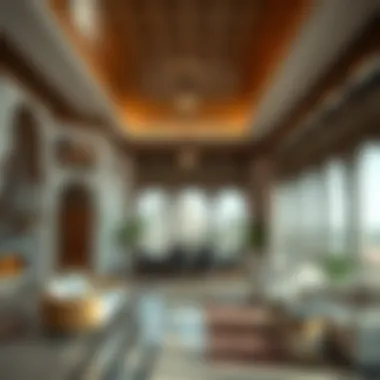
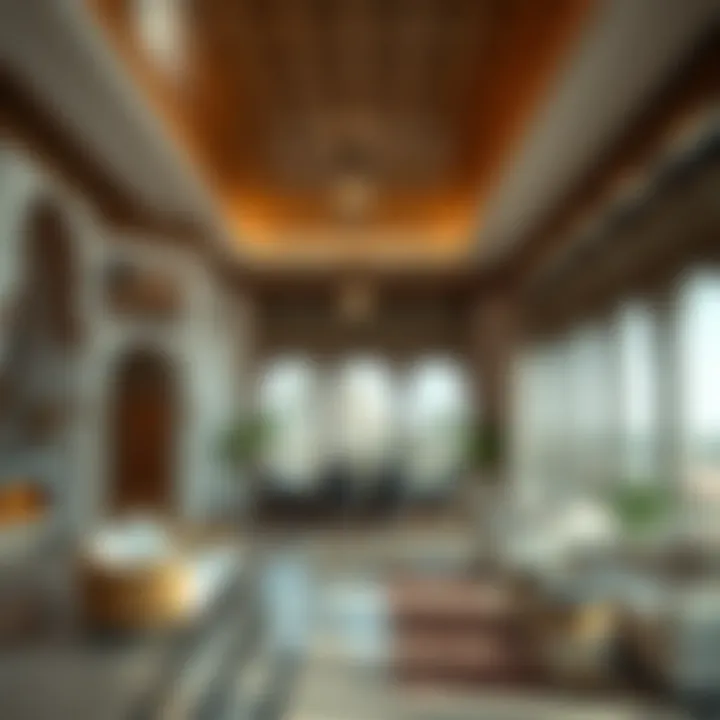
The geographical significance of the name reflects the region’s agricultural past, indicating how crucial water sources have historically influenced settlement patterns. As such, overcoming the challenges posed by the desert has long predated contemporary architectural discussions around the oasis.
"What names carry is not merely phonetics, but also the weight of history and identity."
This etymology offers a glimpse into how locals perceive their environment and values, suggesting a relationship that transcends mere physical structure.
Historical Context of Oasis Structures
To appreciate the Al Kifaf Oasis fully, one must examine the structural lineage of similar oasis-like architectures across the Middle East. Historically, oases served as focal points for trade routes, providing shelter and resources amidst the arid expanse. The architectural styles evolved out of necessity, often integrating methods that capitalized on natural climate conditions to create habitable spaces.
In Dubai, the relevance of this context cannot be overlooked. The fusion of contemporary structural techniques with traditional styles introduces a dialogue between heritage and innovation. Al Kifaf Oasis exemplifies this well — here, one can find advanced materials and sustainable design principles co-existing with motifs that honor the past.
Several key features can be noted when discussing the historical context of these structures:
- Water Resource Management: Ancient solutions such as falaj systems were pivotal in sustaining life in oases.
- Cultural Exchange: Oases served as meeting points, fostering cultural and economic exchanges.
- Adaptive Use of Resources: Traditional buildings often showcased innovations in cooling systems and materials, tailoring solutions to local climates.
Overall, understanding the historical context of oasis structures proves vital for discerning the significance of the Al Kifaf Oasis today. It not only informs current architectural practices but also shapes perceptions of future developments within Dubai.
To dive deeper into historical frameworks and structures, platforms such as Britannica or Wikipedia provide valuable insights and broader contexts.
Architectural Design Elements
The design elements of any structure are not just about aesthetics; they encapsulate the very essence of a building’s purpose and the context in which it exists. When we turn our focus to the Al Kifaf Oasis Building, it’s clear that its architectural features have been thoughtfully crafted, representing both modernity and tradition. This section delves into the key components of its architectural design—the focal points that guide the eye, the materials chosen for construction, and the clever adaptations made in response to the local climate.
Focal Points of Design
Every great architectural piece has focal points that make it stand out. In the Al Kifaf Oasis Building, these elements draw attention and support its narrative. For instance, the towering entrance serves as an inviting gateway, combining grandeur with accessibility. This aspect not only emphasizes the welcoming nature of the building but also reflects the Emirati culture of hospitality.
The interior spaces are also designed to create a dialogue between privacy and openness. Large, airy atriums connect various sections of the building, allowing natural light to flood in. These open areas are often adorned with local artwork, merging traditional practices with modern sensibilities. This juxtaposition elevates the building's aesthetic, making it a point of interest for both locals and tourists alike.
- Natural light: enhances mood and energy efficiency.
- Strategic landscaping: fosters a sense of community.
- Cultural displays: provide educational value to visitors.
Materials and Sustainability
Sustainability sits at the heart of modern architecture, and the Al Kifaf Oasis Building is no exception. The choice of materials speaks volumes about the commitment to environmentally responsible practices. The use of locally sourced stone not only minimizes transportation emissions but also creates a sense of harmony with the surrounding landscape. Moreover, these materials reflect the traditional craftsmanship of the UAE, linking the past to the present.
Additional sustainable features include advanced insulation methods and energy-efficient systems. For example, the building incorporates solar panels that harness the sun's energy, a vital asset in a region known for its abundant sunlight. Such innovations do not just reduce energy costs—they align with global trends toward minimizing carbon footprints.
"By integrating sustainable practices, the Al Kifaf Oasis Building not only provides a comfortable space but also represents a pillar of environmental responsibility."
Influence of Local Climate on Design Choices
Design choices are often dictated by the local climate, and Dubai’s arid environment was a significant consideration in shaping the Al Kifaf Oasis Building. The architects have strategically oriented the structure to reduce heat gain, thereby enhancing comfort indoors without over-reliance on air conditioning.
Design elements such as overhangs and shaded areas are not just for show; they play functional roles by keeping bright sunlight at bay and keeping spaces cooler. The use of reflective surfaces also minimizes heat absorption while contributing to the building's sleek, modern appearance.
Cultural Significance
The cultural significance of the Al Kifaf Oasis Building extends beyond its physical presence, embodying the essence of Emirati identity and heritage. Through its architectural choices and community functions, the building acts as a vessel for cultural expression, inviting reflection on historical narratives while also shaping contemporary experiences. It serves as a reminder of the lasting connection between modern developments and the traditional lifestyles that have defined the region for centuries.
Symbolism of the Oasis in Emirati Culture
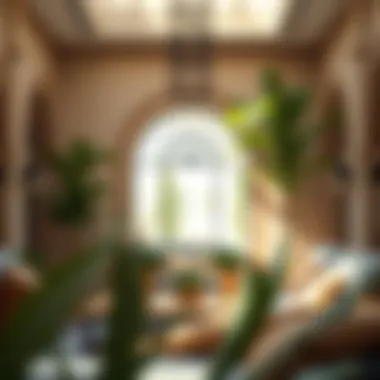
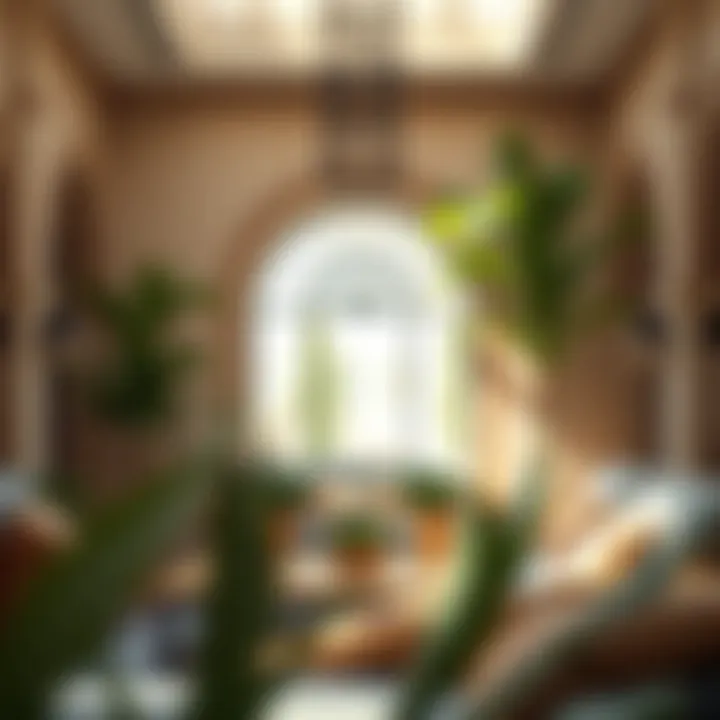
In Emirati culture, the oasis symbolizes far more than just a geographical feature; it is a representation of life, prosperity, and comfort amidst harsh desert conditions. Al Kifaf pays homage to this symbolism, acting as a refuge that blends nature and architecture in a harmonious embrace.
- Tradition and Resilience: The oasis signifies a sanctuary, where both people and resources flourish. It symbolizes resilience in the face of adversity, reflecting how communities have historically relied on such spaces for livelihood amidst the arid landscape.
- Cultural Heritage: It is infused with cultural motifs that are deeply rooted in the Emirati way of life. Design elements such as traditional wind towers and mashrabiya screens evoke a sense of nostalgia, connecting the present with the past.
- Social Gathering Spot: The Al Kifaf Oasis Building facilitates social interactions and gatherings, reminiscent of the oasis' role as a meeting place for nomads and traders. It fosters community ties, echoing the familial bonds prevalent in Emirati society.
By embracing these symbolic aspects, Al Kifaf serves as a crucial point for the dissemination of cultural values, ensuring that the narratives of the past continue to resonate within modern society.
Role in Community Identity
The role of the Al Kifaf Oasis Building in shaping community identity cannot be overstated. It acts as a focal point where residents can gather, learn, and celebrate their heritage, reinforcing a shared sense of belonging.
- Community Engagement: Initiatives that take place within its walls—like workshops, art exhibits, and cultural festivals—offer opportunities for locals to engage with their heritage and with each other. This active participation fosters a strong community spirit.
- Cultural Education: The building serves as an educational hub, showcasing the rich tapestry of Emirati history and culture. Guided tours and informational displays help enlighten not just locals but also tourists, cultivating a deeper appreciation for the cultural landscape.
- Architectural Reflection of Identity: The design itself is a reflection of the community's identity. Residents take pride in a structure that encapsulates their history, values, and aspirations, forming a symbolic link between generations.
In summary, the Al Kifaf Oasis Building stands as a beacon of cultural significance, grounding the present in the rich soil of the past while simultaneously planting seeds for future growth. Its role as a symbol and gathering place highlights the importance of communal spaces in fostering unity and continuity within Emirati society.
Real Estate Implications
Understanding the real estate implications of the Al Kifaf Oasis Building offers a glimpse into the broader picture of Dubai's ever-evolving landscape. The architectural design, along with the cultural aspects, ties into the property market, influencing values and attracting investments. As the Oasis is perceived not just as a building but as a symbol of cultural revitalization, its effects ripple through the local real estate sector, shifting dynamics and perceptions.
Impact on Local Property Values
The Al Kifaf Oasis Building significantly affects local property values, acting like a beacon that draws attention to its vicinity. With its unique architectural features combined with rich cultural elements, properties around the Oasis tend to gain allure for potential homebuyers and investors. In neighborhoods where the Oasis is situated, there's often a marked increase in desirability that can be attributed directly to this structural marvel.
"In any market, iconic buildings spark a sense of prestige and value. Al Kifaf Oasis is no different."
The factors contributing to an upswing in property values in this area include:
- Increased Demand: The distinctive allure of Al Kifaf garners interest not only from local clientele but from international investors as well. People looking to reside near a landmark are often willing to invest more.
- Gentrification Effects: Like many urban centers, revitalized areas often witness gentrification. Surrounding amenities and improved infrastructure enhance the appeal of properties in the region, thereby elevating their market prices.
- Cultural Value: Aligning with Dubai's commitment to merging cultural significance with modern living spaces restructures perceptions of value. Properties nearby bask in the Oasis's sheen, contributing to a kind of cultural prestige.
Investor Opportunities in Al Kifaf
The investment landscape around Al Kifaf is brimming with opportunities that mustn’t be overlooked. The focus on architectural beauty and cultural heritage attracts a diverse range of investors, from local real estate companies to international property developers seeking to dive into one of the world’s most dynamic markets.
Key factors making Al Kifaf a gold mine for investors include:
- Growing Tourism: With more tourists keen on experiencing Dubai's fusion of tradition and modernity, the arising demand for hospitality services bumps up property value, thus providing various profitable avenues for investment.
- Residential Development Potential: There is a myriad of underutilized land adjacent to the Oasis, ripe for development. Increasing residential units or commercial spaces could serve growing populations and increased foot traffic.
- Government Initiatives: Dubai's ongoing support for innovative projects positions Al Kifaf as an attractive locale. Tax breaks, investment incentives, and streamlined processes for foreign investors stand to benefit new projects revolving around the Oasis.
Engagement with the Al Kifaf site presents substantial prospects, but investors must conduct thorough due diligence. Understanding the historical context and future projections are crucial to ensuring well-informed, strategic decisions in this vibrant setting.
Comparative Analysis
Comparative analysis serves as a vital component within this exploration of the Al Kifaf Oasis Building. This segment critically evaluates the architectural and cultural elements of the oasis against other notable structures in Dubai and beyond. By shining a light on similarities and divergences, this analysis reveals not just aesthetic choices, but also societal values and functionality underlying these designs.
Understanding where the Al Kifaf Oasis fits in the larger urban landscape is important to grasp its significance fully. Factors such as community impact, environmental efficiency, and cultural resonance are discussed in the subsequent sections to uncover how this building stands out or aligns with established norms in architectural practice.
Comparison with Other Iconic Buildings in Dubai
When one thinks of Dubai, a few architectural marvels spring to mind, like the Burj Khalifa and the Burj Al Arab. In contrast to these giants of innovation, the Al Kifaf Oasis Building brings a different flavor to the architectural conversation.
- Cultural Integration: While the Burj Khalifa is primarily a symbol of wealth and modernity, Al Kifaf embraces local traditions, presenting design elements that reflect Emirati culture and history.
- Sustainability Practices: Many iconic buildings in Dubai tend to overlook environmental aspects. In contrast, Al Kifaf incorporates sustainable materials and energy-efficient technologies as a core part of its framework, setting an example for future developments.
- Community Focus: Unlike some high-rise structures that isolate themselves from neighborhoods, the Oasis serves as a hub, fostering social interactions and community engagement through its design and layout.
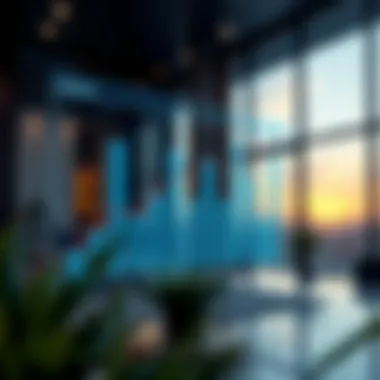
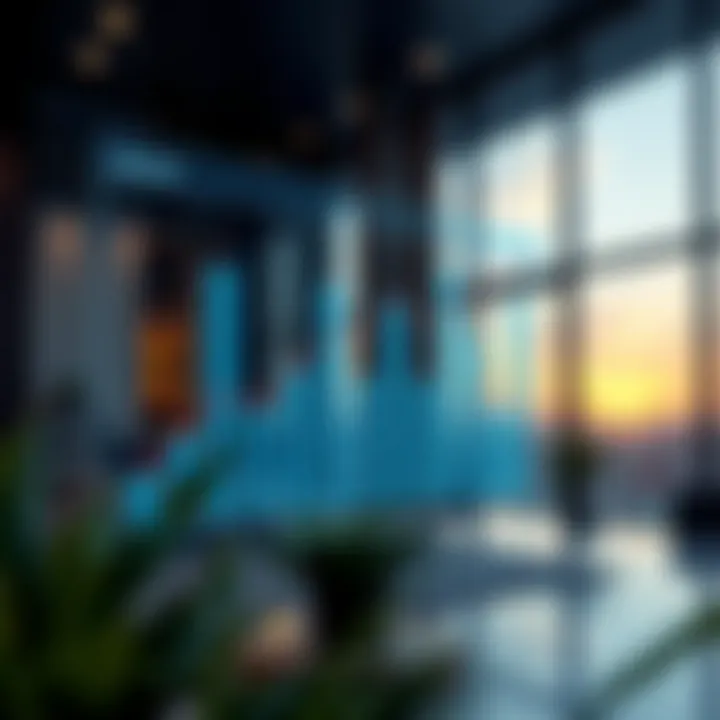
Such comparisons are crucial as they allow investors and real estate analysts to identify the unique selling propositions of the Al Kifaf Oasis, potentially reshaping perceptions about what modern architecture can achieve in a culturally rich context.
Lessons from International Architectural Practices
Looking beyond Dubai, the Al Kifaf Oasis draws inspiration from international architectural practices that prioritize not just the visual impact but also the interplay between structure and society. Various global examples illustrate principles worth noting:
- Adaptive Reuse: Cities like Paris and Rome showcase how integrating historical fabric within modern contexts can create vibrant communities. Al Kifaf mirrors this approach, ensuring that the historical aspects of the location are not overshadowed by its contemporary design.
- Community-Centric Design: Buildings like the High Line in New York emphasize how architecture can serve as a community connector. Al Kifaf aims to do the same, offering spaces that encourage gatherings and cultural events.
- Eco-Friendly Innovations: Cities worldwide are pushing for green designs. Al Kifaf employs similar techniques, using materials that minimize environmental impact and enhance energy efficiency, reflecting a growing trend in architectural responsibility.
In summary, by analyzing the Al Kifaf Oasis in conjunction with both local landmarks and international practices, readers gain a well-rounded perspective on its architectural significance. This understanding extends far beyond aesthetic appreciation; it encompasses cultural relevancy and effective community integration.
The End
The conclusion serves as a critical wrap-up to the overall discussion surrounding the Al Kifaf Oasis Building. This section highlights the profound influence this architectural landmark has had on both cultural and economic fronts. Summarizing the impact of the oasis involves distilling key themes presented throughout the article into palpable insights that resonate with various stakeholders, including investors and community members alike.
In particular, the Al Kifaf Oasis Building's role as a cultural beacon cannot be overstated. It epitomizes the successful marriage of modern functionality with traditional Emirati design elements. The building tells a story—one that reflects the evolution of Dubai and its commitment to remembering its heritage while paving the way for innovative growth. Moreover, the oasis promotes social cohesion by acting as a communal hub, which is especially pertinent in a rapidly urbanizing environment.
Additionally, the building's design enhances property values in the surrounding areas, emphasizing its economic significance. This has positioned it as a point of interest for real estate investors seeking opportunities to capitalize on Dubai's flourishing market. Ultimately, this conclusion argues that the Al Kifaf Oasis Building is not merely an architectural marvel; it stands as a testament to Dubai's journey through time, impacting community identity and economic dynamics simultaneously.
Summarizing the Oasis's Impact
The impact of the Al Kifaf Oasis Building extends beyond its physical presence. It has sparked a renewed interest in the surrounding landscape, inviting conversations about sustainable living and community-oriented design. Unlike many modern structures that can feel isolating, the oasis embodies a welcoming spirit, encouraging both residents and visitors to engage with its aesthetics and purpose.
- Cultural Connection: The oasis has become the nucleus of cultural events, festivals, and community engagements, nurturing a shared identity rooted in tradition yet invigorated by contemporary influences.
- Economic Growth: Local businesses have flourished due to the traffic generated by the oasis, bringing greater visibility to small enterprises and enhancing job opportunities.
- Educational Value: The architectural features serve as a learning platform for students and professionals alike, offering an opportunity to appreciate the nuances of design that respect climatic and cultural context.
The Al Kifaf Oasis Building represents a convergence of heritage and innovation, an embodiment of Dubai's relentless spirit and aspiration.
Future Prospects for Al Kifaf Oasis Building
Looking ahead, the future prospects of the Al Kifaf Oasis Building appear bright. The ongoing interest in blending architecture with environmental sustainability showcases the oasis as a worthy model for future developments. Given the global push for green architecture, its design can serve as viable benchmarks for projects aiming for eco-friendliness without sacrificing aesthetic value.
Investments in technology could elevate the oasis to new heights. With the advent of smart building technologies, there are opportunities for enhancements in sustainability measures, which can particularly transform utility management and energy consumption patterns.
Moreover, as the landscape of Dubai continues to evolve, the Al Kifaf Oasis feels poised to retain its charm while adapting to future demands. Collaborative initiatives with local artisans and creators could further enrich the cultural tapestry of the building, ensuring that it remains relevant and revered in the years to come.
In summary, the Al Kifaf Oasis Building is not just an architectural statement; it is an enduring symbol of progress, community, and the preservation of cultural heritage. Its strategic vision for the future promises to forge a pathway that harmonizes development with respect for the past.
Importance of References
- Establishing Authority: Citing recognized sources like en.wikipedia.org or britannica.com lends authority to the claims made. This a crucial factor for investors and analysts looking for reliable data about the Al Kifaf Oasis.
- Facilitating Deeper Exploration: References enable readers to delve deeper into specific topics. For example, someone intrigued by the sustainability practices used in the building can refer to government and educational websites for more in-depth studies.
- Supporting Arguments: When discussing the building's influence on local property values or the wider socio-economic context, references bolster the arguments made, helping to paint a clearer picture for homeowners and agents alike.
Benefits of Including Sources
It's not just about having a list of sources; it's about strategically integrating them. Here are a few considerations:
- Broader Perspectives: Incorporating a mix of academic articles and popular news sources can broaden understanding and offer multiple viewpoints on the subject.
- Enhanced Trust: A well-cited article builds trust with its audience. Investors, in particular, are more inclined to engage with information that clearly demonstrates its roots in solid research.
"A diligent reader knows that references are not mere footnotes; they are the stepping stones to enlightenment."
- Encouragement of Critical Thinking: By providing links to primary data and case studies, you encourage readers to not only accept the information but to also engage critically with it.
Considerations about References
When including references in this article, it's essential to be selective. Here are specific actions to take:
- Ensure local relevance by referencing Emirati laws or guidelines, which can be found on *.gov domains.
- Engage with urban studies available on *.edu platforms for a deeper academic insight into the architectural significance.
- Stay updated on current market trends through financial websites and news articles.
This structured approach will give readers a well-rounded view of the Al Kifaf Oasis Building, appealing to both seasoned investors looking for hard facts and curious newcomers wanting to expand their knowledge.






